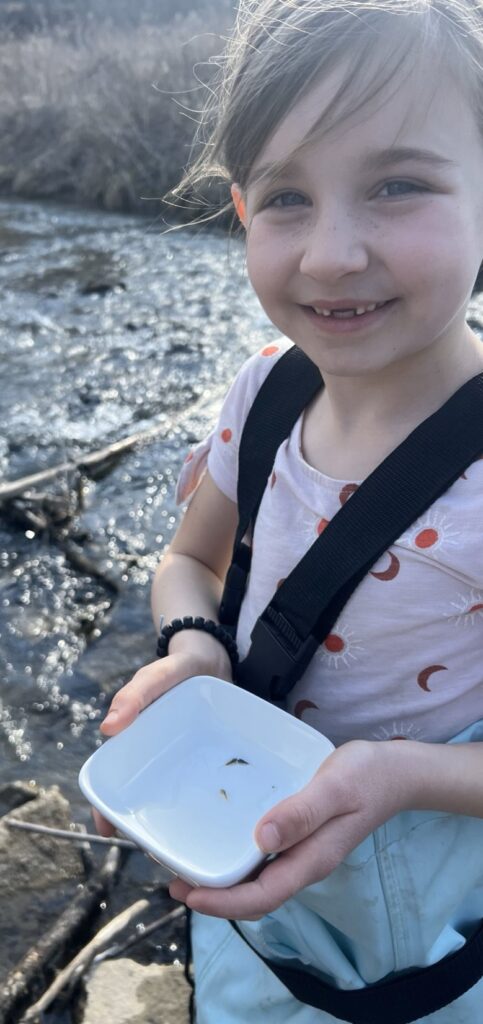March 2024 Macro of the Month Springs’ First Mayfly Emerger: Baetis AKA the blue-winged olive
Dr. Jennifer Biederman

Baetis, a genus of mayflies commonly known as the blue-winged olive among anglers, holds an iconic status in the world of trout enthusiasts. Emerging first from Minnesota streams in early March, this mayfly plays a crucial role in the delicate balance of coldwater stream ecosystems, capturing the fascination of scientists and anglers alike.
The blue-winged olive becomes a vital presence during the cooler late winter and spring months, producing up to three generations and notable hatches during a typically quiet period for insect emergences. During the nymph stage, these mayflies strategically position themselves amidst gravel substrate or vegetation. Research indicates they have evolved to adapt the timing of their activity to avoid trout feeding actively on benthos. As young nymphs with a tiny body size and superior swimming ability, they easily evade trout predation, but as they mature and become larger and more visible, trout readily prey on them. Studies in southeastern Minnesota highlights a trout preference for benthic feeding, with stomachs filled mostly with nymphs, including mayflies and other types of macros that live along the bottom.
Depending on the species, blue-winged olive nymphs spend varying durations – a few months up to a year – maturing before ascending through the water column as a dun. The dun, ready to breathe air, stays on the water’s surface as its wings unfold for flight – an ideal moment for trout to indulge. Within a day or so, the dun undergoes another emergence, splitting its skin to become a fully mature adult mayfly. These adults engage in a swift mating swarm above the stream’s surface, a process so focused on mating that adult mayflies lack a functioning mouth. Not only is there really no time to feed, but females return to lay eggs beneath the water’s surface shortly after mating, after which they live only minutes or hours.
The blue-winged olive emergence often aligns with unpredictable late winter and early spring weather, adding to the intrigue for fly anglers. Their distinct blueish hues and delicate size make them a challenging yet rewarding target.
Beyond their appeal to trout anglers, the presence and emergence of blue-winged olives, like other mayflies, serve as an ecological indicator. Sensitive to pollution and water temperature, their presence reflects stream health and highlights the interconnectedness of aquatic ecosystems with the surrounding landscape. Recent research indicates widespread losses in mayflies and other sensitive aquatic insects globally and across the upper Midwest, primarily due to habitat loss, intensive agriculture, urbanization, pollution, and climate change.
As MNTU continues to enhance coldwater streams across Minnesota, habitat improvement for aquatic macroinvertebrates, including the blue-winged olive, is a primary goal. Restoration efforts focus on creating shallow riffles with coarse gravel substrate and fast-flowing, oxygen-rich water, allowing mayflies and other benthic invertebrates to thrive. Channel narrowing aids sediment passage and reveals coarse gravel substrates. Additionally, projects establish wide buffers of perennial, deeply-rooted native vegetation to shield in-stream habitat from run-off, erosion, and pollutants, providing a conducive environment for macroinvertebrate populations.
Check out this video for tips on tying a blue-winged olive nymph, and this one for tying a dry-fly.
What’s a macro and what’s it have to do with trout angling and conservation? Macros are on the trout menu for pretty much every meal. Macro means big and macroinvertebrates, or “macros,” are animals without a backbone, that are big enough to be seen by the human eye. They can be aquatic or land based, however aquatic insects make up the majority of a trout’s diet. They are also, of course, the inspiration for the flies we tie and use to catch trout. Learn about a new macro each month and how you can create your own to take with you on your next fishing trip!
